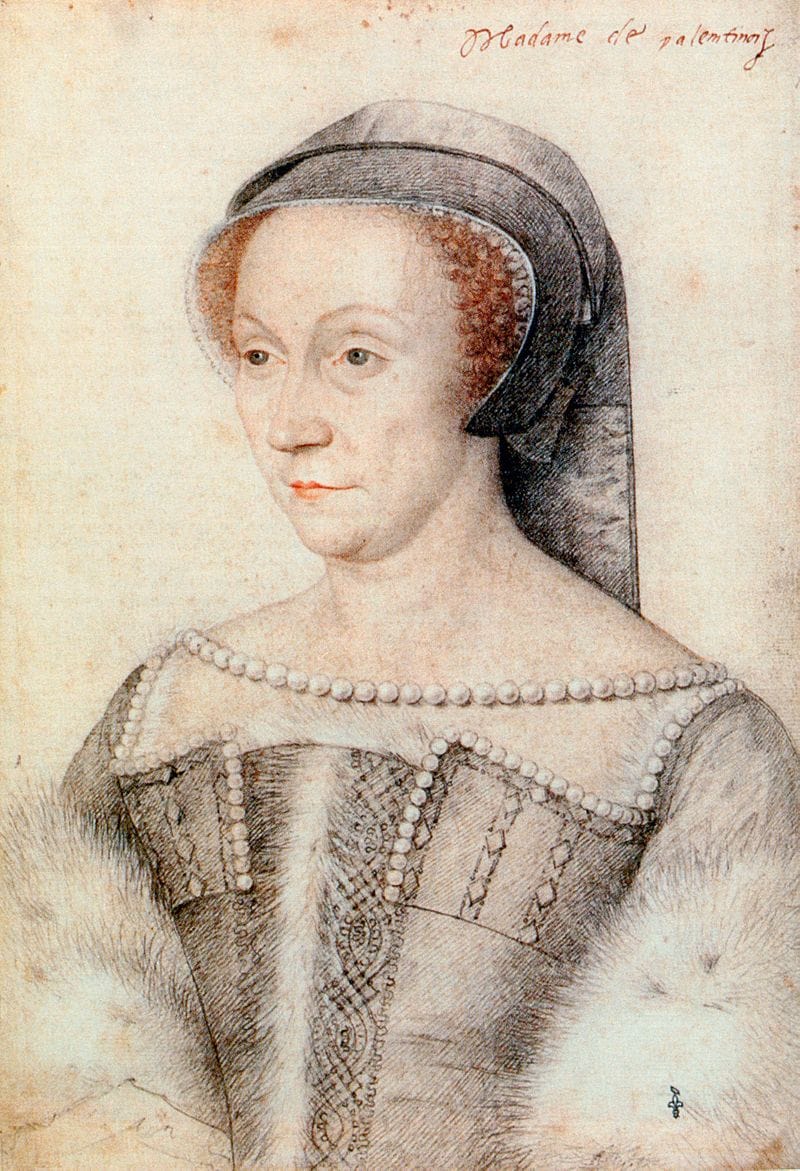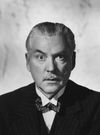Diane de Poitiers and drinkable gold
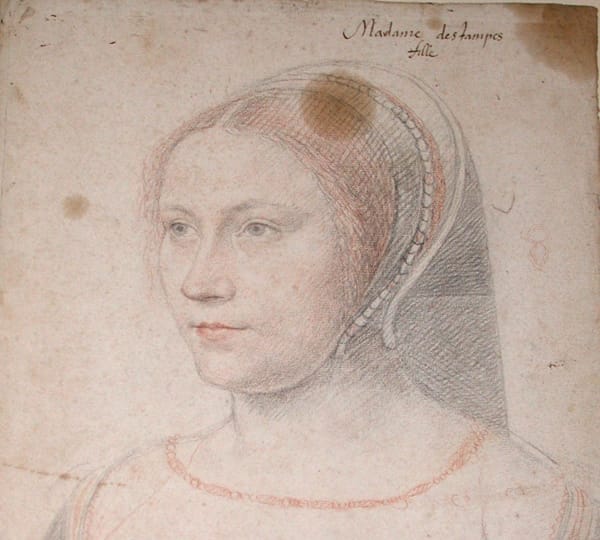
As gold prices surge to historic highs, perhaps investors might consider drinking some of it to make themselves better looking? Both the U.S. and the E.U. have long authorized gold as a food additive and garnish in haute cuisine and schnapps, as long as it's pure, because it's essentially non-reactive and passes straight through the body. But, it does push the price up of your food and drink!
Diane de Poitiers had experience with this. She died in 1566 at the age of 66 and there are two theories about her death. The first is that she never recovered properly after falling from a horse (she rode almost daily). The other theory is she unintentionally poisoned herself with "drinkable gold." This is based on a recent DNA analysis of her hair that found she drank a mix of gold chloride and diethyl ether, possibly daily, in an attempt to retain her looks. The tests show she had 500 times the normal level of gold in her body.
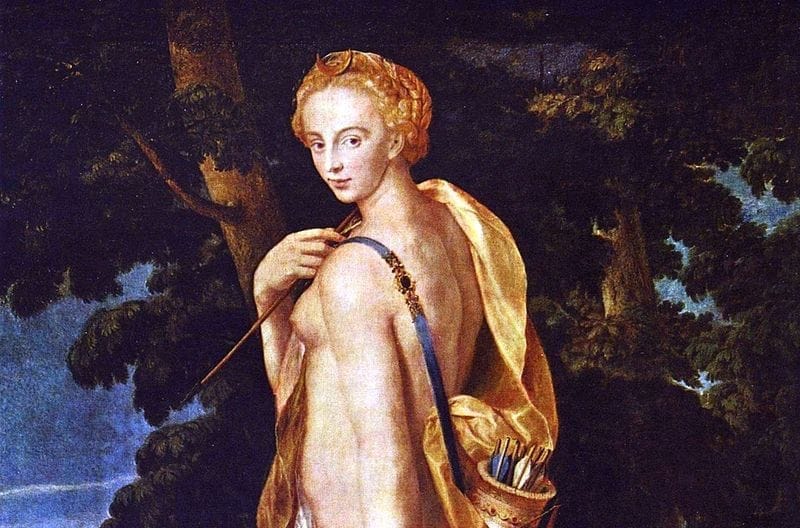
In the story of the Noctambule, this Devil-like figure names Diane as one of the five extraordinary women who chose to give him her immortal soul in exchange for whatever she wanted. Perhaps she chose eternal beauty, because she was said to be the most beautiful woman in 16th century Europe. More likely, she chose riches and fame, because every woman is beautiful, and she drank liquid gold.
Certainly, Diane was beautiful. When she was 35, she enraptured the 15–year-old prince Henri, the future king. Her own husband had passed away a few years earlier, and so she exercised and swam every day and she ate well. The previous year, Henri had married the 14-year-old Catherine de' Medici, an extremely wealthy heiress from the Medici family. Both were 14-years-old. But, it appears that Henri always preferred the company of the older Diane.
Is that her in the much discussed (and really fascinating) painting below? Some say it's Diane, but that view is losing its appeal. It was painted around 1571, well after Diane's death and, while the convention of the time was to idealize and stylize, using allegory, the dates and the symbolism don't seem right.
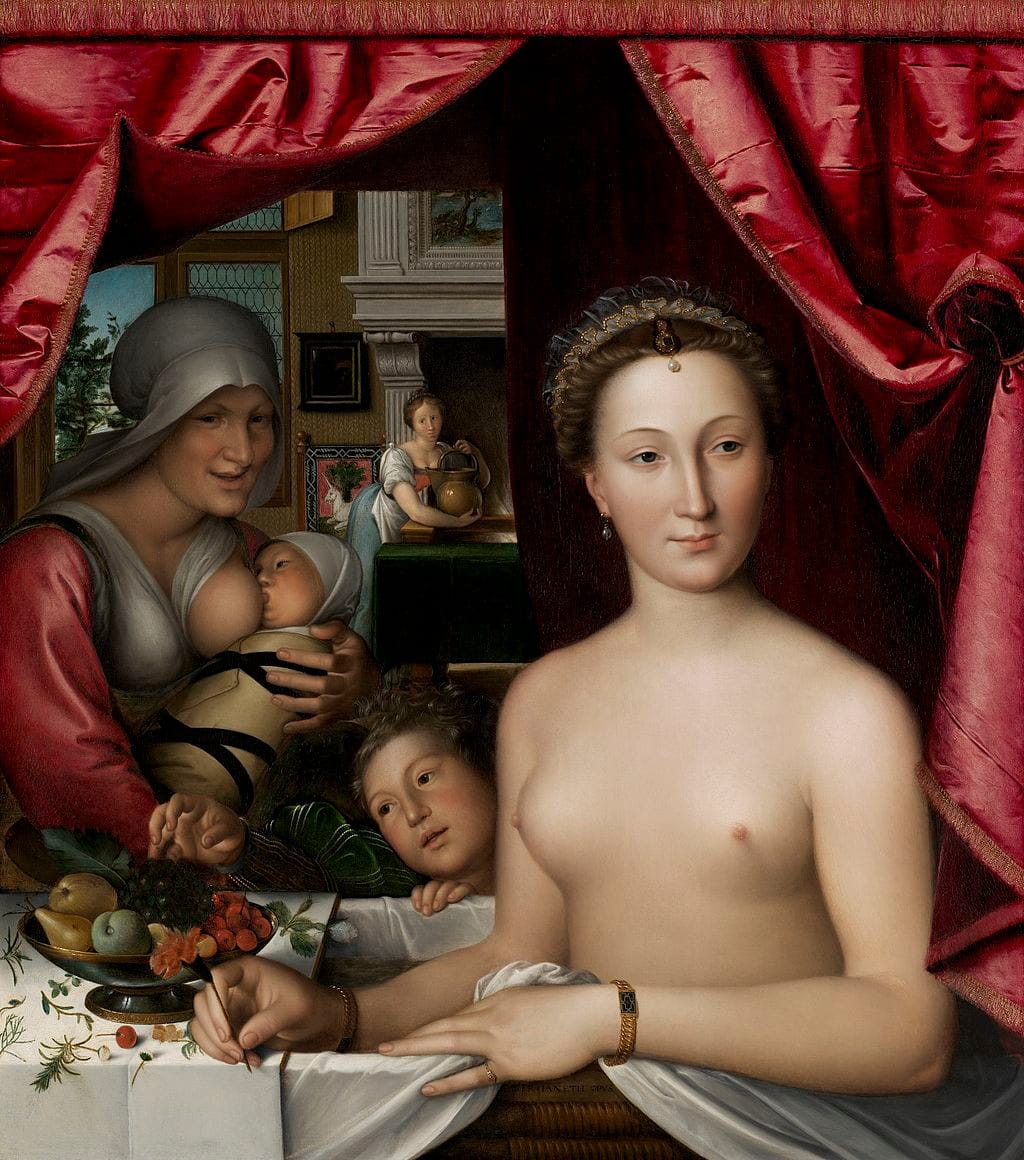
So, if that's not her, what else is there? The painting below is sometimes attributed to Diane but it's probably not her. It's one of the many (naked) "Lady at her Toilette" genre paintings, popular at the time, especially at the royal palace, Château de Fontainebleau. Wikipedia and other sources claim Diane sat for portraits like this, often topless or nude, and other times in traditional poses, but I think it's unlikely she would have posed nude. Rather, like everyone else, she paid artists to produce idealized portraits of herself.
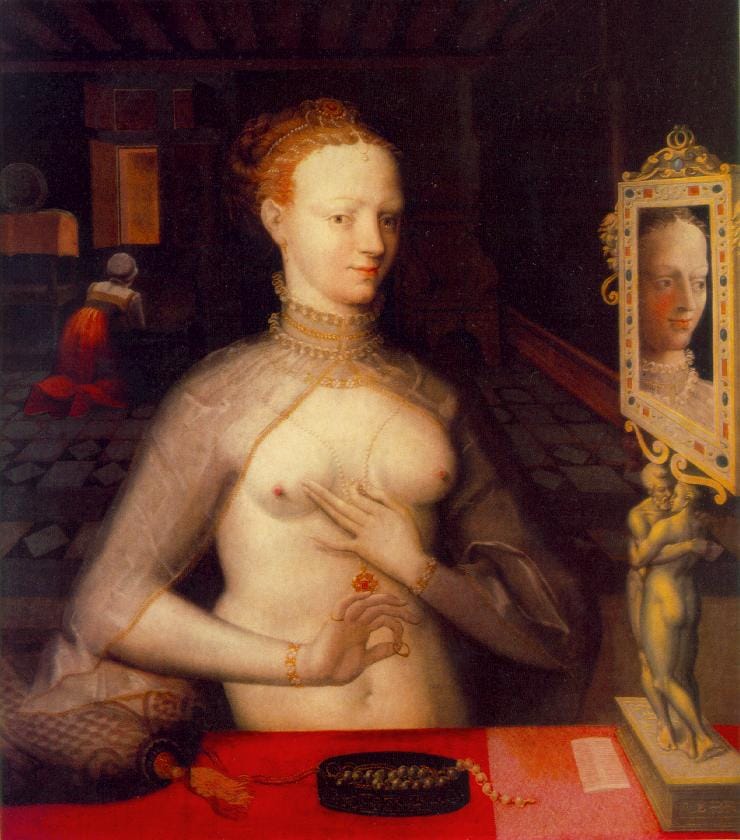
Below is one of those idealized portraits, depicting her as her namesake, Diana the goddess of hunting, and we know she richly decorated her châteaux of Anet and Chenonceau with the Diana motif.
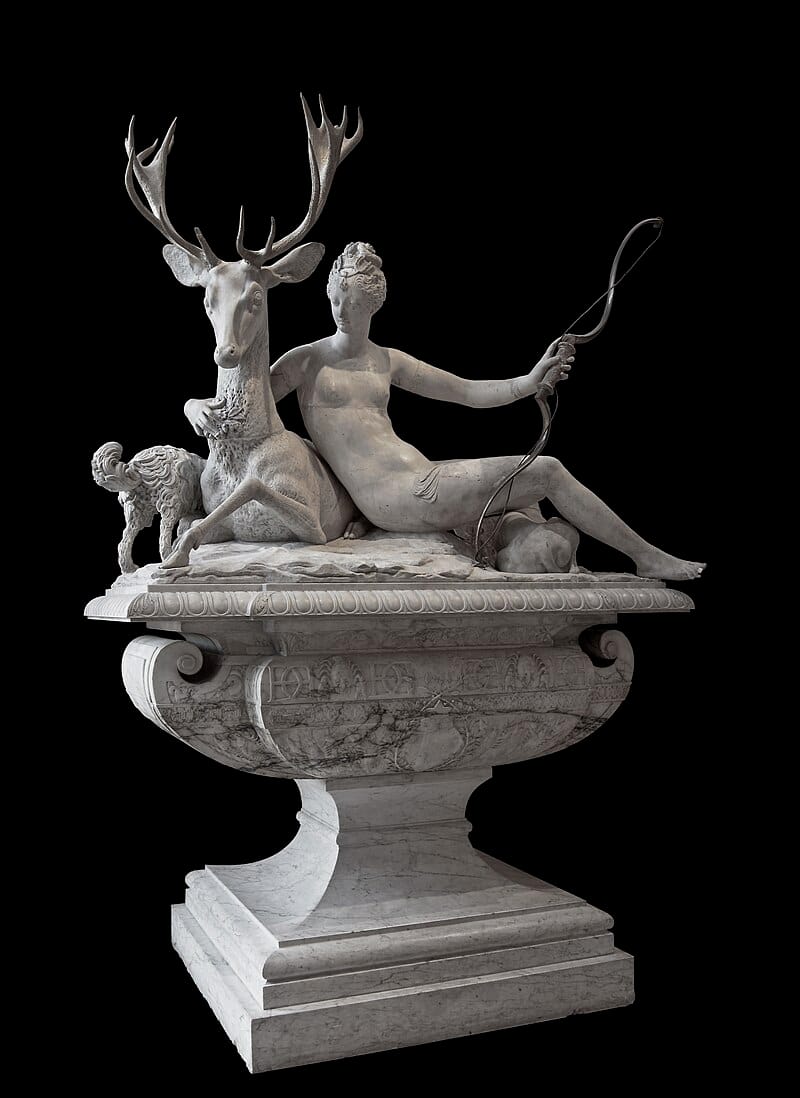
Her biographies acknowledge her vital role in the French court, fending off jealous attacks and protecting Henri. Her maturity and loyalty meant he trusted her to educate his children (by Catherine) and to write many of his official letters, which were signed jointly with "HenriDiane." Later in life he entrusted the Château de Chenonceau to her, which is said to be the most visited château in France after Versailles.
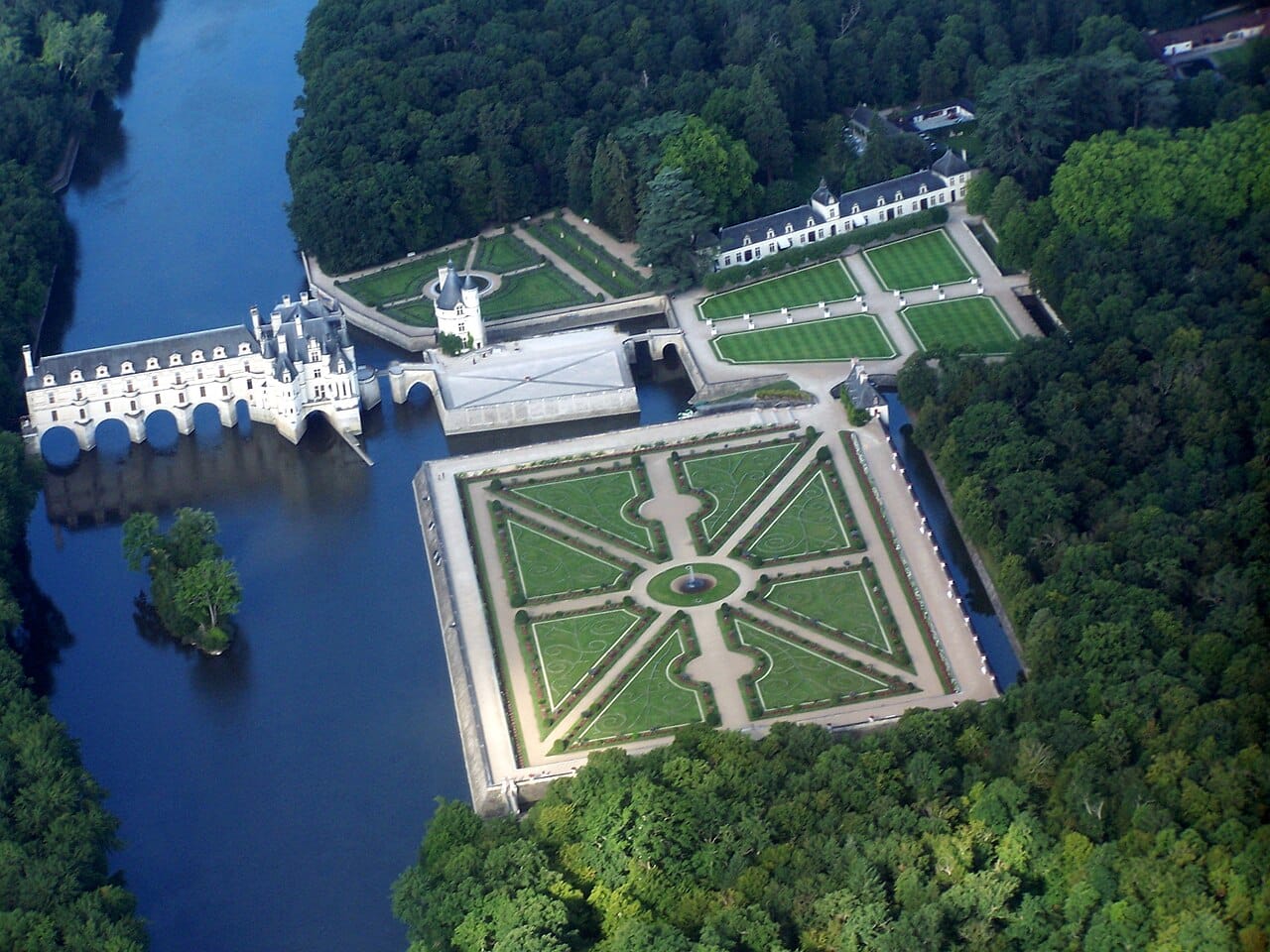
Visitors today can see Diane's garden - the larger one in the foreground of this photo. After King Henri II died in 1559, Catherine expelled Diane back to Anet and added the garden at top left of the photo. Not shown here: a maze and vegetable gardens, a museum and restaurants. Below: Diane later in life...
